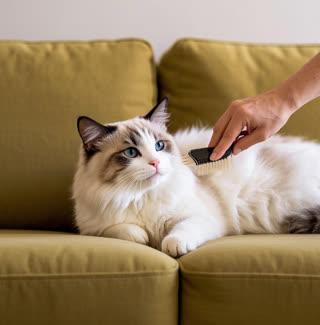Cats are masters of communication—but how many sounds can they actually make? Prepare to be amazed as we explore the fascinating cat facts behind feline vocalizations. From gentle purrs to urgent yowls, this guide decodes your cat’s 100+ unique sounds and teaches you how to respond like a pro. Let’s unlock the secrets of your cat’s language!
Cats evolved to communicate with humans and other animals using a complex system of vocalizations. According to the American Veterinary Medical Association (AVMA), domestic cats use over 100 distinct sounds—compared to just 10-15 in wild felines. This evolutionary leap is due to:
Domestication: Cats developed new sounds to bond with humans
Social Needs: Living in multi-cat households requires nuanced communication
Survival Instincts: Different sounds signal danger, hunger, or mating readiness
(Fun Cat Fact: Kittens meow to get their mother’s attention, but adult cats rarely meow at other cats—they save it for humans!)
Let’s break down the most common cat vocalizations and their meanings:
Meaning: Contentment, healing, or stress relief
Fact: Cats purr at frequencies that promote bone growth and tissue repair
Short Meow: "Hello" or "I’m here"
Long Meow: "I need food/water"
Trilling: Excitement (common in Siamese cats)
(Pro Tip: Use apps like CatChat to record and analyze your cat’s vocalizations.)
While vocalizations grab attention, cats rely equally on body signals:
Tail Position:
Fluffed tail = Fear
Slow wag = Annoyance
Ear Position:
Forward = Curiosity
Backward = Aggression
Posture:
Belly up = Trust
Crouched = Defensive
(Cat Fact: Cats use scent glands in their paws to mark territory while kneading.)
Challenge: Bella, a rescue cat, made mysterious "chirping" sounds
Solution: Behaviorist analysis revealed it meant "Follow me!"
Result: The owner started responding to Bella’s chirps, strengthening their bond
(Key Takeaway: Understanding cat facts about vocalizations improves relationships.)
Myth: "Purring always means my cat is happy."
Myth: "Cats meow to communicate with other cats."
Myth: "Hissing is always aggressive."
Positive Reinforcement:
Environmental Enrichment:
Vet Check-Ups:
Scientists are decoding feline language using AI:
(Cat Fact: A 2024 study found cats understand over 200 human words.)
Q: Why does my cat meow at night?
A: It could be hunger, loneliness, or medical issues. Gradually adjust feeding times.
Q: Can I train my cat to stop excessive meowing?
A: Yes! Use clicker training to reward quiet behavior.
Q: Do all cats make the same sounds?
A: No—breeds like Siamese are more talkative, while Persians are quieter.
Conclusion
Understanding your cat’s 100+ sounds is key to building a stronger bond. By learning these cat facts and responding appropriately, you’ll transform meows into meaningful conversations. Remember—every chirp, purr, and trill is your cat’s way of saying, "I’m here, and I love you."










